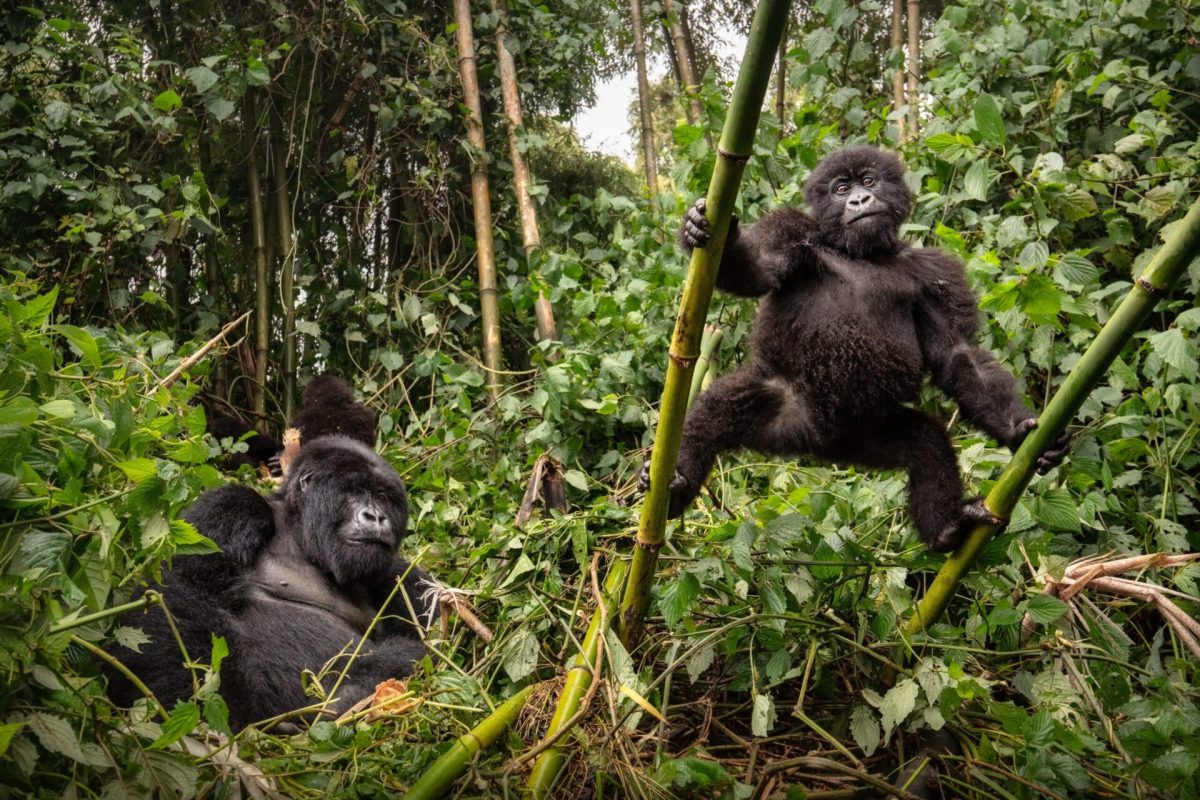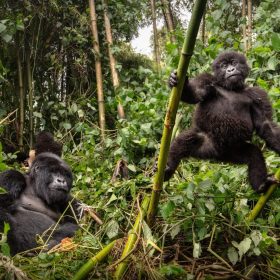Gorilla trekking is increasingly being regarded as one of the most amazing and once in a life -time wildlife encounters by the few travelers that have at least trekked on foot deep into the natural habitat for gorillas. The gorillas share 98% DNA with human beings and the sight of them in their natural wild gently munching food and caring for their young ones is so rewarding.
Many travelers out there are not sure about the human –gorilla relationship that has been famed through eco-tourism, which makes it possible to meet mountain gorillas on a gorilla trek in Rwanda, Uganda and Democratic Republic of Congo. Both western, eastern lowland and mountain gorillas have been subjected to tourism with the later being highly visited.
Gorillas are critically endangered apes prone to human infectious diseases such as cough, diarrhea and other respiratory diseases hence gorilla trekking would be seen by some people as a way of infringing on the privacy and leading to a psychological impact of gorillas for the benefit of humans and not gorillas!
The historic Dian Fossey research highly studied mountain gorillas than the western and eastern lowland gorillas in DR Congo, which yielded scientific evidence about how human contact with gorillas should be done with the highest degree of care to avoid their extinction that has for long been a battle for conservationists and primatologists in the Virunga region where gorillas live.
The important issue to note here is that wild gorillas must be first habituated for a period of 3 years to make them familiar with people by a team of expert researchers, gorilla veterinary doctors, park rangers and few tourists who closely study and imitate gorilla behaviors on a daily basis.
Habituated gorillas are not wild because they have been accustomed to people though with a set of stringent rules that govern the conduct of human behavior while with gorillas which every trekker must be aware of before they can be allowed to see gorillas. Among the rules include a maximum one-hour presence with the gorillas at a 7-meter distance from the gorillas, turning away from gorillas while coughing or sneezing as they can catch coughs and colds from humans.
These rules at times become meaningless as they are violated by the gorillas themselves who move closer or even touch tourists but only to be directed by the guides who tells you to keep calm, scot down or step and slowly turn back wards with less eye contact which have ben confirmed by expert researchers and guides as non threatening actions.
Nevertheless gorillas can be aggressive if they feel threatened by human presence especially the dominant male Silverback that controls a group of gorillas normally reacts by beating its chest, making low-level aggressive noise or chasing fellow gorillas away from humans.
The fact remains; habituated gorillas are not dangerous compared to African predators such as lions and leopards of which people still risk to track. Few cases have been recorded where gorillas attacked tourists which emphasizes the harmony living between gorillas and humans in Africa. In addition armed park rangers must at all times accompany tourists and there is no need to worry about safety while trekking in the forest.
In countries where gorillas are found, gorilla tours are much appreciated for foreign exchange earnings that contribute to development of local communities near gorilla national parks, giving alternatives resources and supportive education that has changed the perspective of people from poaching, encroachment to conservation and protection of gorillas and their habitats. The notable celebrated gorilla naming ceremony “Kwita Izina” in Volcanoes National Park Rwanda stands as one of the strong conservation campaigns that have seen gorilla numbers increase while proceeds from the event partly contribute to community development further proving how humans in Africa co-exist with gorillas.
As a result, gorillas are monitored every single day recording their behaviors and health status of each habituated individual gorilla and this proves peaceful co-existence despite challenges and threats to their survival.
The efforts put in gorilla conservation has helped the gorillas to leave in their habitat without being infringed on by the human beings and when the gorillas infringe on the human territory, they will not be threatened like they used to be since the local community appreciate the importance of gorilla conservation.


